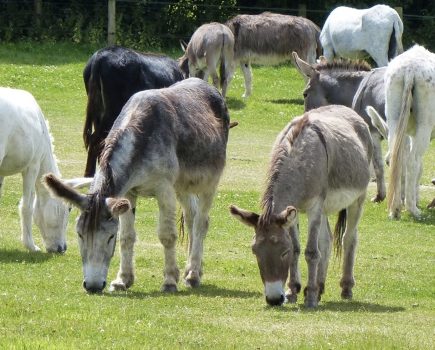There are good reasons for growing heritage vegetables, says Jayne Neville
If you’re growing your own fruit and vegetables, of course you want to harvest produce that is wholesome and full of flavour. Growing your own food is a great way of being in control of what you eat – you know exactly what’s gone into raising your crops, and if you’re an organic gardener, there’s very little risk of chemical residues entering your vegetable food supply. It’s also a wonderful opportunity to break away from the limited choice of fruit and vegetables offered in the supermarkets and shops and try something different. More often than not, the bigger retailers choose to stock modern varieties of vegetables that have been bred to be uniform in size and better able to withstand the rigours of transportation over long distances, often at the expense of flavour and texture. Because of the vast quantities grown, these varieties have taken over as the mainstream choice of modern agriculture and horticulture. Some modern hybrids do offer the smallholder and vegetable gardener such benefits as disease resistance and extreme weather tolerance, and a couple of examples are the root fly resistant Resistafly F1 hybrid carrot and blight resistant potato, Cara. Of course, resistance isn’t just restricted to the new introductions, many of the older varieties are also less prone to disease than others – in the days when organic horticultural practice was the norm and before the advent of chemical sprays, they had to be. Before the introduction of these ‘new’ varieties, gardeners had carefully been saving their vegetable seeds each season, often passing them down through generations – types chosen for flavour, not simply appearance. At that time, the commercial seed companies also offered a much wider choice than they do today. Things started to change in 1973, when the Seed (National List of Varieties) Act was introduced. This meant that, to be legally sold, each variety had to be tested and registered on a national list, at a cost of up to £2,000 a year to the vendor. It was meant to stop unethical seed merchants selling substandard varieties, but instead it had the effect of wiping from the seed catalogues anything that was considered not commercially viable or sold in small quantities, and this included many heirloom varieties. The most popular gardeners’ varieties did make it on to the list, but the Act ensured that the new farmed varieties, introduced by larger companies easily able to bear the annual cost, quickly achieved dominance. Why is maintaining the old varieties so important? As well as being tried and tested over the centuries, heritage vegetables contain a great deal of genetic material that could be useful in future breeding programmes, resistance to pests and diseases, as mentioned earlier, and characteristics which could be vital in these times of climate change – drought tolerance for example. Each old variety ‘lost’ is irreplaceable and reduces further the material available for future advances. On a more personal level, if you’re considering saving your seed to use year after year, choosing the older ‘open pollinated’ vegetable varieties is the only realistic option. Modern F1 hybrids won’t produce true-to-type plants from their own seed, so if seed-saving is your aim, stick to the older varieties. Seeds for heritage vegetables Although many old varieties have disappeared forever, a selection of old favourites can still be found in some seed companies’ catalogues. The Organic Gardening catalogue gives the original introduction date in many of its seed listing details, making it easy to select the heirlooms. In some of the other seed catalogues you may have to look more closely to work out which ones you require. Seed of the older ‘open pollinated’ vegetable varieties are cheaper to buy than the new, F1 hybrids, which have been bred under carefully controlled conditions. The choices listed in the seed catalogues of course are still on the National Seed List, but is there any chance of getting hold of some of those varieties that have already been deleted? Fortunately, there are ways – by joining a seed exchange such as the Heritage Seed Library (HSL), run by Garden Organic (HDRA) in Coventry. As supporters, members of the HSL receive an annual list of old varieties from which they can choose six packets of vegetable seed. There is also a useful ‘seed swap’ section at the back of the yearly catalogue to obtain other varieties from fellow members. If you’re really keen, you can help the HSL by becoming a Seed Guardian, growing a particular variety specifically for raising seed to be offered in the members’ catalogue the following year. Another good source is The Vida Verde Seed Collection, who specialise exclusively in old and unusual vegetable seeds. Take a look at their informative website for an extensive list. Seeds are provided with useful information on cultivation, seed saving tips and recipes and feedback and comments from customers are positively encouraged.
This article is from the March 2006 issue of Country Smallholding magazine. << To order back issues click the link to the left.







